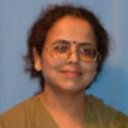Noninvasive screening for preclinical atherosclerosis in children on phenytoin or carbamazepine monotherapy: a cross sectional study.
Palavras-chave
Resumo
OBJECTIVE
This study was carried out to compare the carotid Intimal Media Thickness (IMT), and endothelial function using brachial flow mediated dilatation (FMD), in Epileptic children (6-12 years) on phenytoin (PHT) or carbamazepine (CBZ) monotherapy for ≥18 months with a control group of children.
METHODS
In this cross-sectional study 30 children (aged 6-12 years) on PHT monotherapy and 28 children on CBZ monotherapy were compared with an equal number of apparently healthy age and sex matched children unexposed to antiepileptics. Fasting lipids, sugar, Hs-CRP levels and ultrasonographic assessment of carotid IMT and endothelial function using brachial FMD were conducted.
RESULTS
The age (years) of the children in the CBZ group (9.1±2), PHT group (9.4±2) and the controls (9.3±2) was comparable. The duration of CBZ therapy was 30.8±13.2 months and that of PHT therapy was 29.5±13.6 months. The mean dose of CBZ was 18.18±8.5mg/kg and that of PHT was 5.5±2.3mg/kg body weight. The time since last seizure was 15.6±8.4 months in the CBZ group and 17.3±10.4 months in the PHT group. The fasting blood sugar was below 110mg/dl in all children. The height, weight, waist and hip measurements, waist hip ratio and blood pressures were similar in the groups. The total cholesterol levels (161.7±24.8 vs 140.2±20.8mg/dl, p=0.001), HDL (53.8±10.5 vs 47.1±8.8mg/dl, p=0.017) and LDL (85±21.1 vs 70.9±19.4mg/dl, p=0.01) were significantly higher in the CBZ group compared to the control group. The HDL levels (54.6±9.4 vs 45.8±7.7mg/dl, p<0.0001) were significantly higher in the PHT group compared to the control group. The right carotid (0.374±0.04 vs 0.339±0.05mm, p=0.012), left carotid (0.382±0.05 vs 0.351±0.05mm, p=0.044) and the overall average carotid intima media thickness (0.378±.048 vs 0.345±.052mm, p=0.018) of the children on CBZ was significantly higher than the carotid IMT in control group children. The right carotid (0.370±0.04 vs 0.342±0.05mm, p=0.032) and the overall average carotid IMT (0.374±0.04 vs 0.348±0.05mm, p=0.035) of the children on PHT was significantly higher than the carotid IMT in controls. The FMD were comparable in the children on CBZ or PHT and the control group.
CONCLUSIONS
The results are preliminary but could signal the increased vulnerability of epileptic children on long term antiepileptics to have subclinical atherosclerosis.



